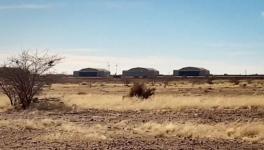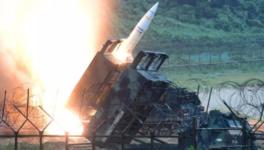Silent Spring --- 50 Years On
This column is admittedly, and regrettably, late in running an article commemorating the 50th year after the publication in September 1962 of Rachel Carsons’ “Silent Spring,” arguably one of the most influential books of our time.
Many tributes and reviews of Silent Spring, not only on this half-centenary but even earlier over the past several decades, have hailed the book as marking the beginning of the environmental movement in the West or even, in some sense, in the world. That is somewhat of an overstatement, although not an unforgivable one. It would be a far closer description of its epochal character to recognize, as unfortunately few have done, that Silent Spring heralded a new way of looking at science and technology (S&T) and its relation to society in the second half of the twentieth century.
Silent Spring was a book about the immense harm being done to nature, particularly to flora and fauna, and to people, by chemical insecticides especially DDT (dichloro-diphenyl-trichloroethane), and about the surreptitious and systematic manner in which corporations and collusive government agencies manufactured, promoted and distributed new chemicals and hid their harmful effects from the public. A working scientist herself, Rachel Carsons used a wide range of painstakingly gathered hard evidence to support her argument that synthetic pesticides such as DDT and other organo-chlorides such as heptachlor were being excessively and indiscriminately used with callous disregard to their ill-effects on human health, animal life and the environment in general. As Carsons powerfully imagined it, these excesses could eventually lead to the destruction of the ecosystem, to the disappearance of birds and insects, and the cessation of their activities and sounds --- hence Silent Spring.
The book sold an amazing 150,000 copies in its first edition, generated huge public awakening, attracted wide support from the scientific community and drew the attention of government agencies including then US President John F. Kennedy who set up a committee to study the use of pesticides. Over the next few years, this and similar other processes led in the US and many other developed countries to stringent restrictions on the use of DDT and, on a broader front, to a series of regulatory measures relating to chemicals, industrial pollution and environmental damage in general.
Rachel Carsons knew that she was challenging powerful players, that she would incur the wrath of the corporate-industrial establishment and its apologists in academia, the political-administrative set up and in civil society. And she did. Silent Spring was viciously attacked, its findings and methods ridiculed, and Rachel Carsons herself was personally vilified. Corporate spokespersons labelled her a fanatic, scientists working in the chemicals industry called her emotional and romantic, and several politicians on the Right even charged her with acting on behalf of “sinister forces” (read the then Soviet Union) which wanted to undermine US agriculture! Many of these wild charges are repeated to this day, and have become part of the right-wing harangue against any and all opinions that challenge, or could even support a challenge to, the corporate-industrial complex and its manipulation of the science and use of technology.
50 years after Silent Spring, there is still considerable debate on the supposed benefits and hazards of DDT and, more broadly, on the extent to which environmentalists exaggerate dangers from different industrial products and processes, and therefore on the extent and kind of regulation required. But few would contest the idea that the chemicals industry is no longer viewed as a benign provider of synthesized products of undoubted benefit to humankind, or as a set of harmless factories in the countryside. Indeed, the very notion that science and technology, especially as harnessed and deployed by ever more powerful corporations, always works for societal betterment is increasingly being questioned. The consequent need for greater social accountability, if not social control, is also being more sharply realized and more vocally asserted. In much academic literature, and as reflected in various international conferences, this phenomenon has been recognized as a fundamental change in the social contract of science, that is, a shift in what science and technology are expected to deliver to society, how this is to be monitored and ensured, and how people would participate in shaping the relevant institutions and processes. Quite apart from the specifics in the book, these are the questions that Silent Spring posed and which societies continue to confront today.
DDT and pesticides Rachel Carsons did not, as many of her critics propagate, argue that DDT is evil by definition or that pesticides should never be used. Nor did she actually posit a definitive causal relationship between contact with DDT and cancer. As someone who herself was afflicted with breast cancer and who succumbed to it in 1964, Rachel Carsons was very careful in her pronouncements especially because she did not want to be accused of subjective bias. Nor did her work lead to a total ban on DDT, which then caused hindrances to the campaign against malaria, as her critics accuse. Anticipating the precautionary principle which came to be accepted by scientists much later, her main argument was to thoroughly investigate and proceed with abundant caution.
She wrote, “It is not my contention that chemical insecticides must never be used… [but that] we have put poisonous and biologically potent chemicals indiscriminately into the hands of persons largely or wholly ignorant of their potentials for harm. I contend furthermore that we have allowed these chemicals to be used with little or no advance investigation of their effect on soil, water, wildlife, and man himself.”
In 1972, after extensive investigations, the Environment Protection Agency prohibited the widespread application of DDT in the US for pest control in agriculture, that is to say, aerial or other spraying of entire fields and wetlands. Scientists have found incontrovertible evidence, verified many times over since then in different parts of the world and by all relevant international organizations, that DDT is highly toxic to all forms of animal life and to humans, and persists in the environment for a long time of over 200 years. When sprayed in fields, DDT is absorbed in the soil from where it is gradually released into the atmosphere, and enters into the food chain where it gets magnified the higher up the chain it goes. Indeed, one of the factors that gave impetus to Silent Spring and the anti-DDT campaign in the US was the correlation thought to have been established between the rapidly dwindling population of the iconic US national bird, the bald eagle, and the widespread agricultural use of DDT.
But DDT was never totally banned. It continued to be manufactured in the US well into the 1980s and, in fact, is still legal even in the US for import and use subject to restrictions as above. DDT continues to be prohibited in the EU. DDT is one of 12 Persistent Organic Pollutants prohibited in 2001 under the Stockholm Convention which, however, allowed for country-specific exceptions. India is among those nations that sought exception for non-agricultural uses, mainly for use against malaria and kala-azar parasites and carriers. India, which had banned agricultural use of DDT in 1989, remains one of the world’s largest producers and users of the substance, China having ceased production in 2007.
In 2006, the World Health Organization responded to continuing high incidence of malaria in Africa, but also in other parts of the world, by revoking the prohibition on DDT and once again permitting its use in Indoor Residual Spraying (IRS) against malaria vectors and parasites. The rationale given was that, when used in small controlled quantities, spraying DDT on the inside roof and wall surfaces of homes and animal shelters proves very effective against mosquitoes. The move received support from then President George W. Bush’s President’s Malaria Initiative and was also, of course, hailed by right-wing DDT proponents in the US who, otherwise anti-UN, now a argued that the WHO endorsement disproved the “junk science and myths” which had prompted the prohibitions in the first place.
However, the case for even controlled use of DDT remains controversial. For one, DDT continues to be universally prohibited in agriculture. Its persistence in the environment remains high, several times above prescribed limits, despite several decades of ban, as recent studies in Europe and Canada have shown. (In this context, why the Indian government and a section of scientists want to continue with agricultural spraying of endosulfan, often described as DDT’s cousin, remains a puzzle.) Further, the WHO exception stresses that the permission for DDT is only for those regions where vectors are still susceptible to it. This is the give-away. India used DDT extensively in the 1960s and ‘70s, but later found the mosquitoes had developed resistance to it, as happens with all insects with respect to all insecticides. After discontinuation of DDT for almost three decades, mosquitoes naturally became once again susceptible to it. This is the classic “pesticide treadmill” in which, insects develop resistance to one set of pesticides, then new pesticides are developed and deployed, to which too the pests develop resistence after some years, and so on and on!
50 years after Silent Spring, the question posed by the book remains relevant: “How could intelligent beings seek to control a few unwanted species by a method that contaminated the entire environment and brought the threat of disease and death even to their own kind?”
Agro-Industrial Menace What also continues to be relevant after all these fifty years is the menace posed by agro-chemical industries which, despite all the popular awareness and the regulatory mechanisms, have only become larger, stronger and have today come to dominate agriculture and the food business the world over. The production and widespread promotion of hazardous agro-chemicals continues unabated, showing that these corporations are driven by far more insidious and powerful economic and political forces of global capitalism.
The seminal role played by Silent Spring appears to be endorsed by the raft of environmental legislations in the US, Europe and other countries and by the many global regulatory instruments adopted since then. In the US, the Environment Protection Agency (EPA) came into being in 1970 and the Clean Water Act was passed in 1972. In its official history, the EPA itself acknowledges its debt to Silent Spring which, it says, “played in the history of environmentalism roughly the same role that ‘Uncle Tom’s Cabin’ played in the [anti-slavery] abolitionist movement. In fact, EPA today may be said without exaggeration to be the extended shadow of Rachel Carson.”
Not that Silent Spring was alone in highlighting the threats posed by chemical industries. Besides the use of chemical warfare agents going back to the first World War, and the extensive and debilitating use by the US of Napalm and defoliating Agent Orange in Vietnam, numerous industrial disasters dramatically revealed the dangers to human populations posed not only by the amateur use of many chemicals but even by their manufacture and storage under supposedly safe, controlled conditions in factories run by technically trained specialists. Everyone knows about the chemical fire on the highly polluted Cuyahoga River in the US, the Minamata mercury poisoning in Japan, and India’s own horror, the Bhopal Gas Disaster resulting from release of deadly gases from a plant manufacturing pesticides. The world now has, besides the Stockholm Convention, the Rotterdam Convention on Hazardous Chemicals, the Basel Treaty on the Trans-national Movement of Hazardous Materials and so on. In India, we were supposed to have instituted a host of regulations and controls over industries manufacturing and storing hazardous materials, but as a string of thankfully less horrific industrial “accidents” since Bhopal have shown, we have learned very few lessons.
Anyone reading Silent Spring now would probably be surprised at how much was already known in 1962 about the harmful effects of a wide range of agro-chemicals on the ecology including humans. What should cause even more astonishment, if not alarm, is how little our societies have learnt about, and how little we have done to regulate, the activities of the burgeoning agro-chemicals sector.
Get the latest reports & analysis with people's perspective on Protests, movements & deep analytical videos, discussions of the current affairs in your Telegram app. Subscribe to NewsClick's Telegram channel & get Real-Time updates on stories, as they get published on our website.
























